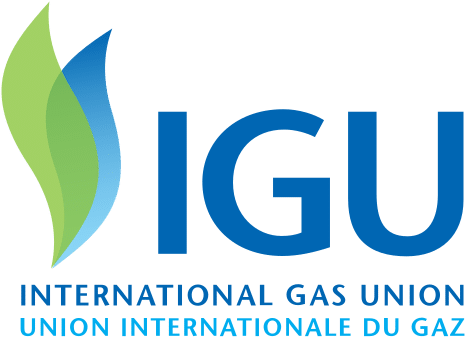Vietnam the new Tiger of Asia: sustainable development facilitated by gas
Published on November 11, 2021Up to the mid 1980’s Vietnamese GDP per capita was in the range of 200-300$. In 1986 the government introduced a series of economic and social reforms and managed the country into a “socialist-oriented market economy”. Almost 30 years later, Vietnam is the new Tiger of Asia and one of the stars of the emerging markets universe. The impressive economic growth of 6-7% rivals China, and it exports (2019 – 264,6 Billion USD are worth as much as the total value of its GDP (2019 – 261,9 Billion USD)[1] Anything from sportswear to smartphones are manufactured in this ASEAN nation
This growth is no “flash in the pan”. There is also significant resilience – in spite of the challenges of COVID. This has impressed multiple commentators, eg The Economist. “Parts of the country are in strict lockdown and a swathe of factories, from those making shoes for Nike to those producing smartphones for Samsung, have either slowed or shut down, disrupting global supply chains. Yet integration with global manufacturing has kept Vietnam’s economy humming during the pandemic. In 2020 GDP rose by 2.9% even as most countries recorded deep recessions”[2]
Energy as the driver of socio economic growth
So, what was the miracle mixture that enabled such a growth miracle to happen? In addition to trade and external liberalization with domestic reforms through deregulation and lowering the cost of doing business, heavy development of indigenous energy resources such as hydropower, coal, and natural gas provided the necessary energy to both power a growing economy and meet the energy needs of a growing population.
The surging energy demand drove significant imports of energy, coal, and LNG to satisfy the increased demand for electricity. Electricity consumption has tripled over the past decade, growing faster than output. Given the increasing reliance of fossil fuels, the power sector itself accounts for nearly two-thirds of the country’s greenhouse gas emissions. The Vietnamese Government is therefore working to lower the environmental footprint and accelerate the clean energy transition and adapt to climate change.

The updated Power Development Plan no 8 (PDP8), creates the necessary policy framework for Vietnam to replace coal with combination of natural gas & renewables. Natural gas – both domestically sourced and imported will be an important energy carrier for ;
1 – Energy access for a rapidly growing population
2 – Catalyst for sustainable development as part of a broader modernisation of economy
3 – Natural partner to renewables
4 – Decarbonise and clean air through removal of coal
LNG import – sourcing enhanced volumes of natural gas for PDP8
Vietnam aims to start importing LNG in 2022 and sees LNG among its solutions for lowering carbon emissions and ensuring the country’s energy security, import demand will increase significantly in the period 2021 – 2045.
| Potential LNG demand 2021 – 2045 | ||
| Period | Capacity MW | Volume (thousand tons/year) |
| 2021-2025 | 2,250 | 3,500 |
| 2026-2030 | 10,286 | 16,000 |
| 2031-2035 | 8,904 | 13,850 |
| 2036- 2040 | 15,400 | 9,900 |
| 2041-2045 | 12,300 | 7,907 |
| Total | 61,050 | 39,246 |
Source DPD8
A race has emerged among domestic state-owned energy companies, private corporations, and regional utilities from traditional LNG importing markets, including Japan, South Korea, and Thailand. Investors from the United States, both global energy majors and broader concerns, have also been prominent in the mix.
Air quality enhancement through gas & renewables
Another relevant issue is air quality. Vietnam is suffering from some of the worst air pollution recorded. This is driven by both the transport sector and the significant volume of coal utilized in Vietnam’s energy system. The 2019 World Air Quality Report says that for the first time, Hanoi has overtaken China’s Beijing, as the world’s most suffocating capital.

IQ AirVisual, which uses data from governments, companies, civic society groups and ground-based and real-time monitoring stations, surveys air quality in over 3,000 cities globally by measuring PM2.5 levels. “Rapid development coupled with weak emission standards for power plants, vehicles and industries and a high and rising share of coal in power generation contribute to high air pollution levels in bigger cities. Vietnam’s coal consumption doubled, and oil consumption increased by 30 percent over the past five years,” the report said.
A major rationale for PDP8 therefore is the removal of dirtier fuels from the energy system, to be replaced by the natural gas & renewables combination that has so successfully cleaned the air in cities as far apart as Beijing and London.
Conclusion – growth, prosperity and public health, delivered by gas
Vietnam is an excellent example of natural gas as a creator of socio-economic value through:
1 – The creation of a more sustainable energy system and cleaner air
2 – Enhanced, secure and flexible provision of energy to a rapidly growing population
3 – Enhanced, secure and flexible provision of energy to a rapidly growing and diversifying industrial economy.
It’s just another example of how “gas works”.
[1] WITS (World Integrated Trade Solution)
[2] The Economist 2nd September 2021
